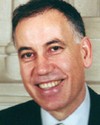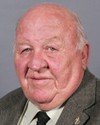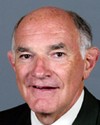Madam Speaker, that is a very interesting question coming from a colleague who also has a municipal background. Sometimes I wonder whether it is an asset or a liability having that municipal background. I am sure in his case as well as in mine it is a wonderful background to have because we know firsthand what is important to our constituents, and that is bricks and mortar: to have a proper transportation system that works; to have policing that provides us with security; to have social programs, whether it is housing or social services, that work; to have hospitals that work; to have emergency rooms that work. All of that is almost like a micro type of arrangement of what we have at the national level.
The member asked a question about infrastructure and the importance of specific programs. Members may recall that one of our colleagues from Nepean, Beryl Gaffney, and I co-chaired the 1990 infrastructure task force initiated by our caucus at that time. We were in opposition then. We criss-crossed the country and met with many mayors as well as councillors. We came back with a report that to a large extent formed the basis of our very first infrastructure program the Liberal Government of Canada put to Canadians. That program has created thousands of jobs across the country, has responded to the needs of municipalities and has really acted as an economic stimulant at a time when not many economic stimulants were around, aside from those that were in the works.
I would say that not only has the government put in an additional $2 billion this year for strategic infrastructure, as my colleague has stated, but also as part of our new strategy on national security we have put in an additional $600 million that will go specifically to infrastructure around border crossing points in terms of preparing highways, preparing bridges and other types of infrastructure activities that are required.
Specifically for the $2 billion project that my colleague has spoken about, that will be absolutely marvellous for communities such as the one I represent. To cross from one end of this community to the next, it takes approximately 45 minutes at peak hours. That is a long time. We have a highway of only four lanes at best. There are six lanes in the middle of the city, but really it is only two lanes in communities outside the city. We are a community of close to one million people when we take in the suburbs. On the other side of the river we have an additional 700,000 people at least. In total it would be about 1.8 million people. Our communities would benefit greatly from a light rail system that would connect communities both east and west as well as north and south.
What a wonderful thing it would be if the communities on both sides of the river were to come together on this absolutely marvellous infrastructure program of $2 billion and submit one project for light rail in order to connect the communities east to west as well as north to south on both sides of the river, on the Outaouais side as well as the Ontario side. That would be a dream. I am sure that with the government commitment of $2 billion that dream could become a reality, therefore creating more jobs, responding to the needs of the community, protecting the environment and preparing the city to go into the next century fully equipped and energized in order to respond to the needs of its people.
These are the kinds of projects we see being repeated across the country. These are the kinds of initiatives the government has put before us and before Canadians. That is why I am exceptionally honoured and proud to be a part of this government and this regime and seeing those initiatives being implemented and being put before Canadians.






